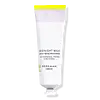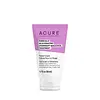What's inside
What's inside
 Key Ingredients
Key Ingredients

 Benefits
Benefits

 Concerns
Concerns

 Ingredients Side-by-side
Ingredients Side-by-side

Water
Skin ConditioningGlycerin
HumectantGlyceryl Stearate
EmollientCetyl Alcohol
EmollientNeopentyl Glycol Diheptanoate
EmollientGlyceryl Caprylate
EmollientSqualane
EmollientPalmitoyl Tripeptide-38
Skin ConditioningCaprae Lac
Skin ConditioningMilk Protein
Skin ConditioningLactose
HumectantBifida Ferment Lysate
Skin ConditioningBakuchiol
AntimicrobialMelatonin
AntioxidantHyaluronic Acid
HumectantIsododecane
EmollientMelia Azadirachta Flower Extract
Skin ConditioningStearic Acid
CleansingGlyceryl Stearate Citrate
EmollientHydroxyacetophenone
AntioxidantPanthenol
Skin ConditioningCoccinia Indica Fruit Extract
Skin ConditioningCarbomer
Emulsion StabilisingAllantoin
Skin ConditioningXanthan Gum
EmulsifyingCaprylhydroxamic Acid
Glyceryl Laurate
EmollientBetaine
HumectantSodium Hydroxide
BufferingCentella Asiatica Extract
CleansingHydroxypropyl Cyclodextrin
MaskingSpinacia Oleracea Leaf Extract
Skin ConditioningSodium Carbonate
BufferingPropanediol
SolventTephrosia Purpurea Seed Extract
Skin ConditioningAcetyl Hexapeptide-8
HumectantGardenia Florida Fruit Extract
Skin ConditioningMaltodextrin
AbsorbentWater, Glycerin, Glyceryl Stearate, Cetyl Alcohol, Neopentyl Glycol Diheptanoate, Glyceryl Caprylate, Squalane, Palmitoyl Tripeptide-38, Caprae Lac, Milk Protein, Lactose, Bifida Ferment Lysate, Bakuchiol, Melatonin, Hyaluronic Acid, Isododecane, Melia Azadirachta Flower Extract, Stearic Acid, Glyceryl Stearate Citrate, Hydroxyacetophenone, Panthenol, Coccinia Indica Fruit Extract, Carbomer, Allantoin, Xanthan Gum, Caprylhydroxamic Acid, Glyceryl Laurate, Betaine, Sodium Hydroxide, Centella Asiatica Extract, Hydroxypropyl Cyclodextrin, Spinacia Oleracea Leaf Extract, Sodium Carbonate, Propanediol, Tephrosia Purpurea Seed Extract, Acetyl Hexapeptide-8, Gardenia Florida Fruit Extract, Maltodextrin
Water
Skin ConditioningCetearyl Alcohol
EmollientCarthamus Tinctorius Seed Oil
MaskingGlyceryl Stearate Citrate
EmollientCocoglycerides
EmollientAloe Barbadensis Leaf Juice
Skin ConditioningBakuchiol
AntimicrobialHelianthus Annuus Seed Oil
EmollientGlyceryl Laurate
EmollientTheobroma Cacao Seed Butter
EmollientSqualane
EmollientTocopherol
AntioxidantTocopheryl Acetate
AntioxidantOenothera Biennis Oil
EmollientArgania Spinosa Kernel Oil
EmollientChamomilla Recutita Flower Extract
MaskingCalendula Officinalis Flower Extract
MaskingGlycerin
HumectantSodium Anisate
AntimicrobialXanthan Gum
EmulsifyingSodium Levulinate
Skin ConditioningGlyceryl Caprylate
EmollientSodium Phytate
Potassium Sorbate
PreservativeCitric Acid
BufferingWater, Cetearyl Alcohol, Carthamus Tinctorius Seed Oil, Glyceryl Stearate Citrate, Cocoglycerides, Aloe Barbadensis Leaf Juice, Bakuchiol, Helianthus Annuus Seed Oil, Glyceryl Laurate, Theobroma Cacao Seed Butter, Squalane, Tocopherol, Tocopheryl Acetate, Oenothera Biennis Oil, Argania Spinosa Kernel Oil, Chamomilla Recutita Flower Extract, Calendula Officinalis Flower Extract, Glycerin, Sodium Anisate, Xanthan Gum, Sodium Levulinate, Glyceryl Caprylate, Sodium Phytate, Potassium Sorbate, Citric Acid
 Reviews
Reviews

Ingredients Explained
These ingredients are found in both products.
Ingredients higher up in an ingredient list are typically present in a larger amount.
Bakuchiol is a plant-derived antioxidant (it's vegan!). It is often called the replacement for retinol although it is not part of the same family.
It has similar effects as retinol: skin smoothing, reducing discoloration, and preventing wrinkles. It does not cause as much irritation as traditional retinoids.
Bakuchiol works by breaking down free radicals and stimulating collagen production in skin.
Combining bakuchiol with retinol will not have adverse side effects. Studies show using them will just boost the benefits. Bakuchiol is also found to help stabilize retinol.
While bakuchiol does not make the skin more sun sensitive, we recommend wearing SPF on a daily basis.
Read more about traditional retinol
Learn more about BakuchiolGlycerin is already naturally found in your skin. It helps moisturize and protect your skin.
A study from 2016 found glycerin to be more effective as a humectant than AHAs and hyaluronic acid.
As a humectant, it helps the skin stay hydrated by pulling moisture to your skin. The low molecular weight of glycerin allows it to pull moisture into the deeper layers of your skin.
Hydrated skin improves your skin barrier; Your skin barrier helps protect against irritants and bacteria.
Glycerin has also been found to have antimicrobial and antiviral properties. Due to these properties, glycerin is often used in wound and burn treatments.
In cosmetics, glycerin is usually derived from plants such as soybean or palm. However, it can also be sourced from animals, such as tallow or animal fat.
This ingredient is organic, colorless, odorless, and non-toxic.
Glycerin is the name for this ingredient in American English. British English uses Glycerol/Glycerine.
Learn more about GlycerinGlyceryl Caprylate comes from glycerin and caprylic acid, a fatty acid from coconut. It has emollient and emulsifier properties.
As an emollient, it helps hydrate your skin. Emollients work by creating a barrier on your skin to trap moisture in, helping to keep your skin soft and smooth.
On the other hand, emulsifiers prevent ingredients (such as oil and water) from separating.
Learn more about Glyceryl CaprylateGlyceryl Laurate isn't fungal acne safe.
Glyceryl Stearate Citrate is a citric acid ester of glyceryl stearate.
It is an emulsifier, emollient, and a surfactant.
Emulsifiers help stabilize a product. It does this by preventing certain ingredients from separating. Common ingredients include oils and water, which do not mix naturally. Emulsifiers have properties that help keep ingredients such as these together.
Emollients help soothe and soften the skin. They do this by creating a protective film on your skin. This barrier helps trap moisture and keeps your skin hydrated. Emollients may be effective at treating dry or itchy skin.
Surfactants help gather oils, dirt, and other pollutants from the skin. This helps them to be easily rinsed away.
Learn more about Glyceryl Stearate CitrateSqualane is an emollient that helps the skin hold onto moisture. It's an oily liquid that occurs naturally in certain types of fish and plant oils.
Because squalane boosts hydration in the skin, it also comes with plenty of benefits: it is an antioxidant and can help fight free radicals and skin damage. Squalane is also found to have a detoxifying effect when applied.
Squalane comes from squalene, which occurs naturally within the sebum of our skin. It is one of the oils our skin produces to keep itself hydrated. Squalane is the hydrogenated version of squalene and has a longer shelf life.
Research shows that squalane is non-irritating (even at 100% concentration).
In general, it's a fantastic ingredient. It does a great job at hydrating the skin, and it's suitable for those with sensitive skin.
The source of squalane may impact malassezia / fungal acne. This is because olive oil derived squalane can contain impurities such as fatty acids and plant waxes. Sugarcane derived squalane is recommended for anyone with malassezia concerns.
Is squalane vegan?
This depends on the source. Squalane can be derived from both plants and animals. Most squalane used in skincare comes from plants.
Please note: the source of squalane is only known if disclosed by the brand. We recommend reaching out to the brand if you have any questions about their squalane.
Read more about squalene with an "e".
Is squalane an oil?
Squalane is often called an oil, but it’s technically not; it’s a hydrocarbon, meaning it’s only made of carbon and hydrogen, unlike true oils which are triglycerides made of fatty acids and glycerol.
The term “oil-free” isn’t regulated, so companies can define it however they want. Some exclude all oils, while others just avoid mineral oil or comedogenic oils.
While some people avoid oils thinking they cause breakouts, the right kind of oil (or oil-like ingredient like squalane) can actually help balance and hydrate your skin. It’s worth testing out simple oils or squalane to see what works best for your skin.
Learn more about SqualaneWater. It's the most common cosmetic ingredient of all. You'll usually see it at the top of ingredient lists, meaning that it makes up the largest part of the product.
So why is it so popular? Water most often acts as a solvent - this means that it helps dissolve other ingredients into the formulation.
You'll also recognize water as that liquid we all need to stay alive. If you see this, drink a glass of water. Stay hydrated!
Learn more about WaterXanthan gum is used as a stabilizer and thickener within cosmetic products. It helps give products a sticky, thick feeling - preventing them from being too runny.
On the technical side of things, xanthan gum is a polysaccharide - a combination consisting of multiple sugar molecules bonded together.
Xanthan gum is a pretty common and great ingredient. It is a natural, non-toxic, non-irritating ingredient that is also commonly used in food products.
Learn more about Xanthan Gum